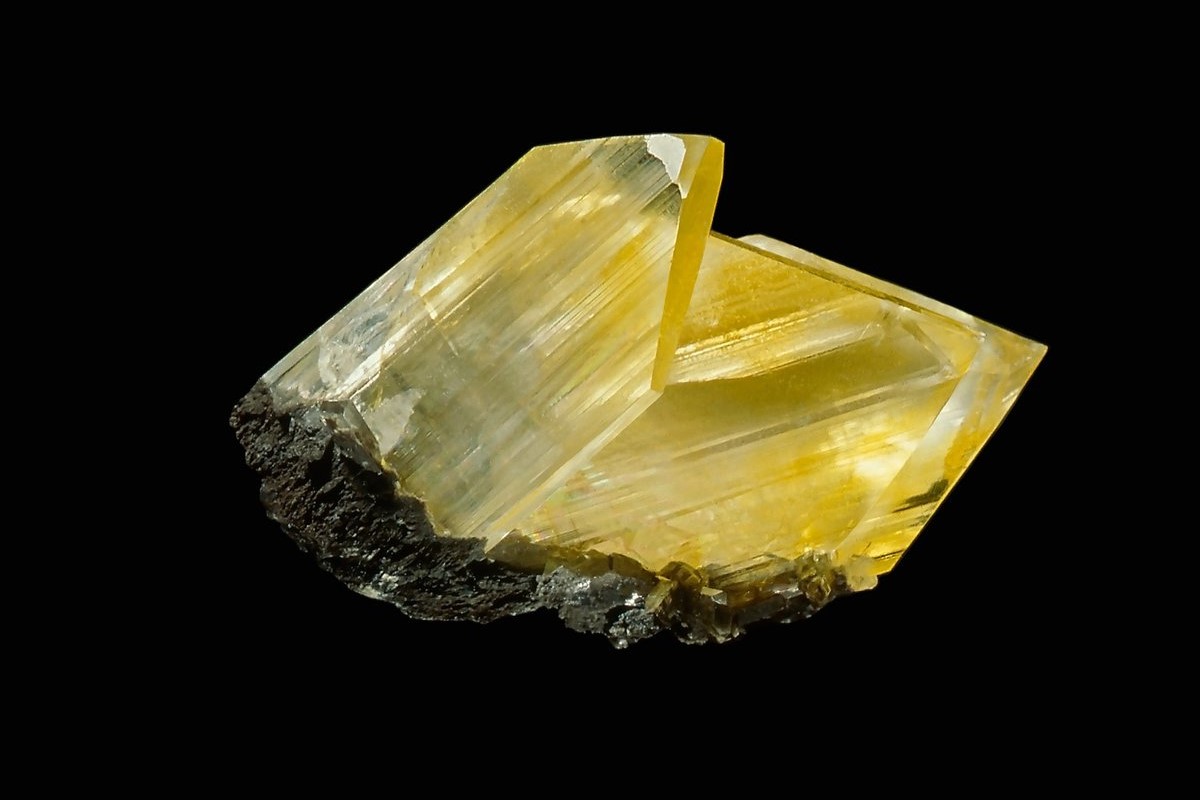
What is Anglesite? Anglesite is a captivating mineral with the chemical formula PbSO4, meaning it’s composed of lead sulfate. This mineral is known for its striking variety of colors, including gray, yellow, red, blue, and even colorless forms. Found in lead deposits worldwide, anglesite often forms in the oxidation zones of galena ores. Its orthorhombic crystal structure and range of lusters, from adamantine to vitreous, make it a favorite among mineral collectors. Despite its beauty, anglesite is relatively soft, with a hardness of 2.5 to 3 on the Mohs scale, and contains toxic lead, necessitating careful handling.
Key Takeaways:
- Anglesite is a lead sulfate mineral with a fascinating history and diverse applications. It forms in lead deposits worldwide and has been discovered in various colors and crystal forms. Its primary use is as a source of lead for industries.
- Anglesite, named after its type locality in Anglesey, Wales, is known for its prismatic crystals and notable localities around the globe. It has been extensively studied for its crystal structure and properties, and is primarily used as a source of lead for industrial applications.
What is Anglesite?
Anglesite is a fascinating mineral with a rich history and diverse applications. Let's dive into some intriguing facts about this lead sulfate mineral.
-
Chemical Formula and Composition
Anglesite is composed of lead sulfate, with the chemical formula PbSO4. This means it combines lead and sulfuric acid. -
Crystal Structure
It has an orthorhombic crystal structure, featuring three axes of unequal length, all intersecting at 90 degrees. -
Hardness
On the Mohs scale, anglesite's hardness ranges from 2.5 to 3, making it relatively soft. -
Streak
When powdered, anglesite leaves a streak that ranges from gray to white. -
Specific Gravity
Its specific gravity ranges from 6.3 to 6.38, indicating it is much heavier than water. -
Luster
Anglesite can exhibit various lusters, including adamantine, resinous, and vitreous (glassy). -
Transparency
This mineral can be opaque, translucent, or transparent, depending on its formation. -
Colors
Anglesite can appear in many colors, such as gray, yellow, red, blue, brown, green, white, orange, violet, pale, black, lemon, colorless, and gold.
Where is Anglesite Found?
Anglesite is commonly found in lead deposits worldwide. It often forms in the oxidation zone of galena ores.
-
Occurrence
It is typically found in lead deposits and often associated with other secondary minerals like gypsum, cerussite, pyromorphite, and wulfenite. -
Type Locality
The type locality of anglesite is the Parys Mountain Mine Complex in Anglesey, Wales, UK. -
History of Discovery
Anglesite was first recognized as a distinct mineral species in 1783 by William Withering in Anglesey, Wales. -
Naming of Anglesite
Francois Sulpice Beaudant named the mineral in 1832 after its type locality in Anglesey, Wales.
Crystal Forms and Properties
Anglesite crystals are typically prismatic and elongated, often with a diamond-shaped cross-section.
-
Crystal Forms
They can also occur in granular or massive forms and are often twinned. -
Fluorescence
Under shortwave ultraviolet light, anglesite fluoresces, emitting a light to golden yellow color. -
Associated Minerals
It is commonly found with minerals like galena, sphalerite, baryte, and quartz. -
Pseudomorphs
Anglesite can form pseudomorphs after galena, preserving the original crystal shape.
Notable Localities
Anglesite has been discovered in numerous locations around the globe, each offering unique specimens.
-
Localities
Notable sites include Tsumeb, Namibia; Touissit mine, Morocco; Broken Hill, Australia; and the Comet Maestries mine in Tasmania, Australia. -
Australia
The Broken Hill district in New South Wales and the Comet Maestries mine in Tasmania are significant sources of high-quality anglesite specimens. -
Austria
In Austria, anglesite has been found at the Stefanie Mine in Bad Bleiberg, Carinthia. -
France
The La Fonderie slag locality in Poullaouen, Châteaulin, Finistère, Brittany, France, is known for its unique anglesite finds. -
Germany
Anglesite is relatively rare in Germany but has been reported from several locations, including Siegerland, Müssen.
Uses and Applications
Anglesite's primary use is as a source of lead, which is essential in various industries.
-
Uses in Industry
Lead from anglesite is used in batteries, ammunition, construction materials, and as a pigment in paints. -
Toxicity
Due to its lead content, anglesite is toxic and should be handled with care. -
Jewelry
Its low hardness makes it less suitable for jewelry, despite its beauty.
Scientific Studies and Synthetic Production
Anglesite has been extensively studied for its crystal structure and properties.
-
Crystallographic Forms
It can exhibit prismatic and tabular forms, with the prismatic form typically elongated. -
Crystal Structure Data
Studies provide detailed information about the internal arrangement of atoms within anglesite. -
Synthetic Anglesite
Laboratories have produced synthetic anglesite for research purposes. -
Rigid-Body Character
Research shows that the SO4 groups in anglesite exhibit rigid-body character. -
Crystal Structures of Barytes and Celestine
Studies of barytes and celestine provide a comprehensive understanding of the orthorhombic crystal system.
Localities and Specimens
Mindat.org offers a wealth of information on anglesite localities and specimens.
-
Localities and Map Coordinates
Mindat.org lists localities for anglesite, including map coordinates and references. -
Localities with Estimated Coordinates
Some localities have estimated coordinates, indicating less precise documentation. -
Doubtful Localities
Some reported localities for anglesite require further verification. -
World-Class Specimens
Certain localities are known for producing world-class anglesite specimens. -
Pseudomorphs and Inferring Past Occurrences
Pseudomorphs of anglesite after galena provide evidence of past occurrences. -
Industrial Applications
Anglesite's primary use remains as a source of lead for various industrial applications.
Anglesite's Fascinating World
Anglesite, with its lead sulfate composition and orthorhombic crystal structure, stands out in the mineral world. Its varied colors, from gray to gold, and fluorescence under UV light make it a visual treat. Found in lead deposits globally, it often forms in the oxidation zones of galena. Discovered in 1783 in Anglesey, Wales, and named by Francois Sulpice Beaudant, anglesite has a rich history.
Despite its beauty, anglesite's softness and lead content limit its use in jewelry. However, its industrial importance as a lead source can't be overstated. From batteries to construction materials, anglesite plays a crucial role. Collectors prize high-quality specimens from places like Broken Hill, Australia, and Tsumeb, Namibia.
Understanding anglesite's properties and uses offers a glimpse into its significance in both scientific and industrial contexts. This mineral truly bridges the gap between natural beauty and practical utility.
Frequently Asked Questions
Was this page helpful?
Our commitment to delivering trustworthy and engaging content is at the heart of what we do. Each fact on our site is contributed by real users like you, bringing a wealth of diverse insights and information. To ensure the highest standards of accuracy and reliability, our dedicated editors meticulously review each submission. This process guarantees that the facts we share are not only fascinating but also credible. Trust in our commitment to quality and authenticity as you explore and learn with us.


